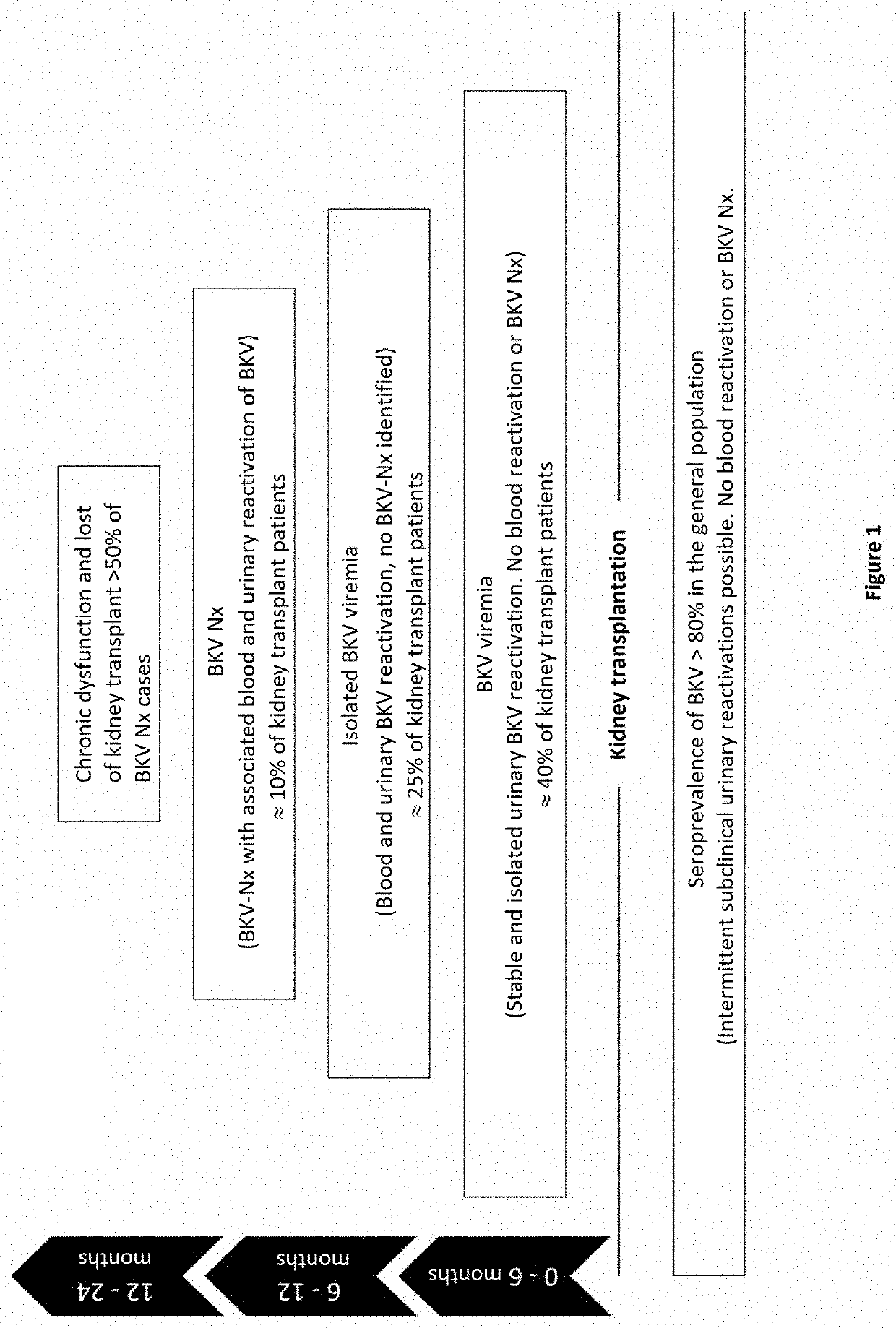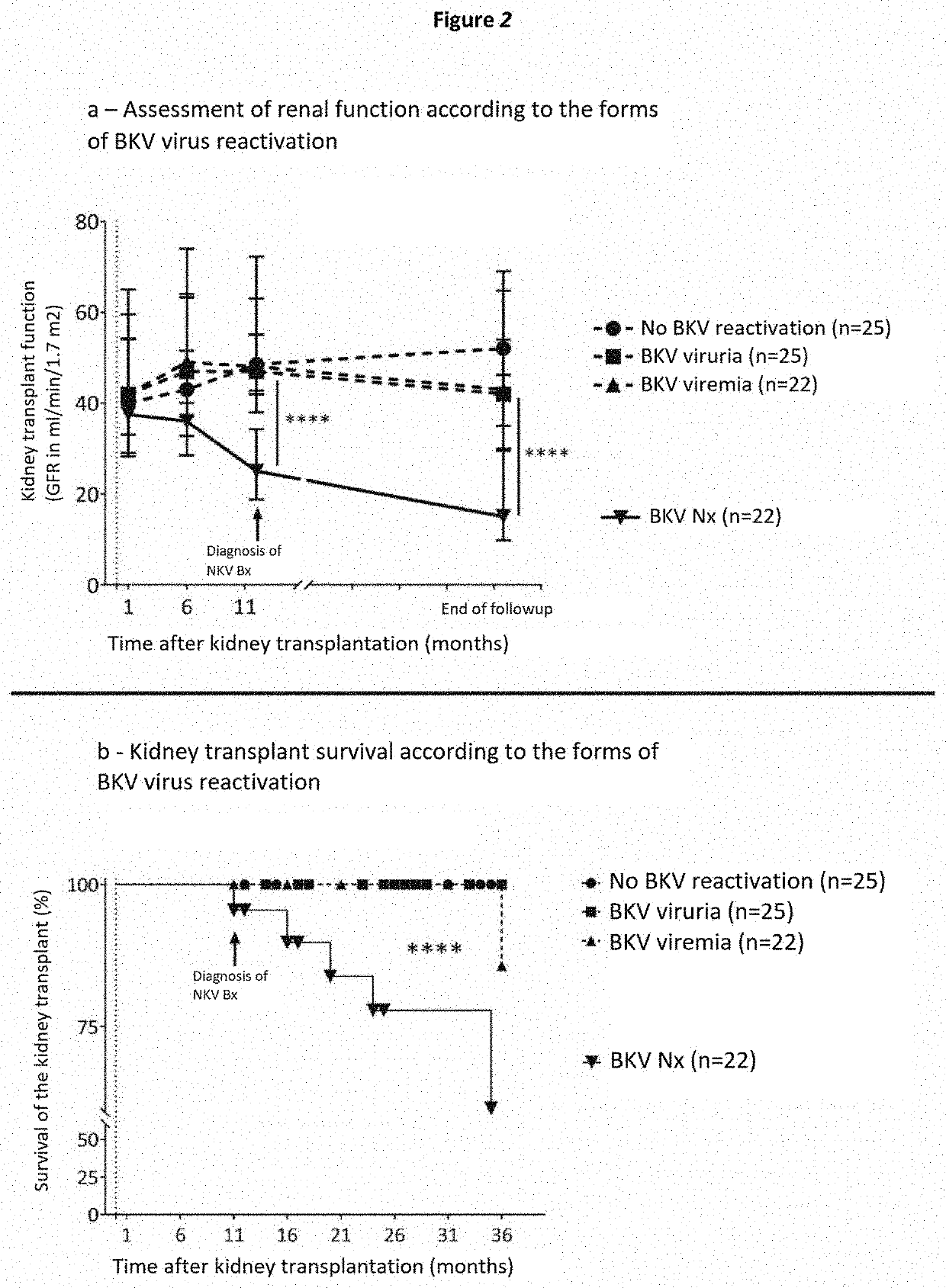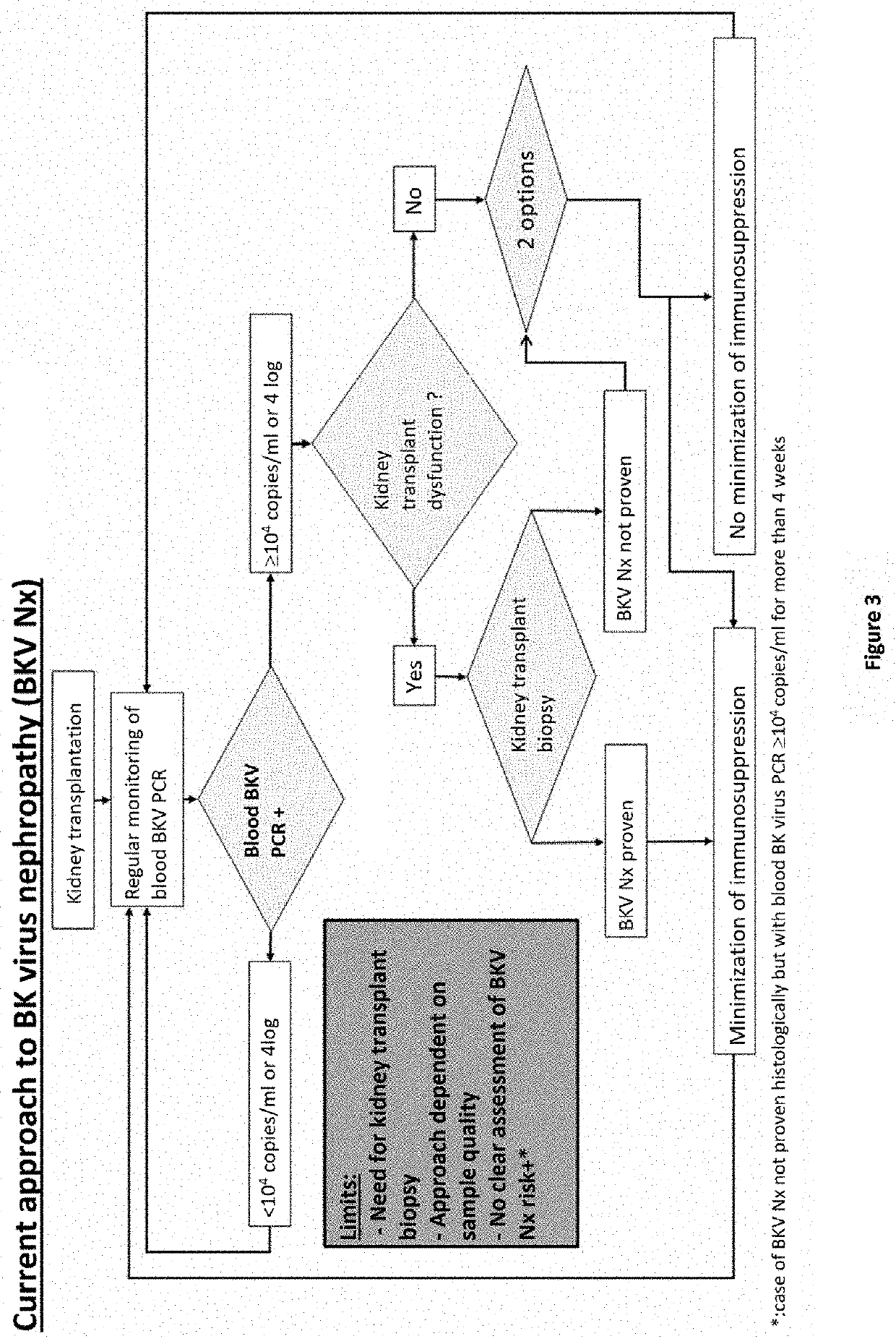Method for stratifying the risk of BK virus nephropathy after a kidney transplant
a technology of bk virus and kidney transplantation, which is applied in the direction of instruments, biochemistry apparatus and processes, material analysis, etc., can solve the problems of increasing the number of patients awaiting kidney transplantation, increasing the risk of bk virus nephropathy after a kidney transplant, and viral reactivation is very common, so as to improve the preservation of the transplanted kidney
- Summary
- Abstract
- Description
- Claims
- Application Information
AI Technical Summary
Benefits of technology
Problems solved by technology
Method used
Image
Examples
examples
[0226]Materials and Methods:
[0227]In order to characterize the specific cellular response for BKV post-kidney transplantation, the present inventors conducted an observational study including 94 kidney transplant patients. The patients enrolled were all from the Nephrology Department of Bicetre Hospital (University Hospitals of South Paris). In all, this site performs more than 130 kidney transplants per year with an active file of more than 2000 patients monitored with a functional kidney transplant. The CPP Ile de France [ethics committee] was consulted and did not find any ethical obstacle to conducting this study. An information letter was given to all the patients and their consent was collected in writing.
[0228]This study started in November 2014 with a duration of enrollment of 36 months (enrollment finished on November 1, 2017). The inclusion criteria were the following:[0229]patients above age 18,[0230]no other organ transplantation except for the kidney one,[0231]no active...
PUM
| Property | Measurement | Unit |
|---|---|---|
| time | aaaaa | aaaaa |
| time | aaaaa | aaaaa |
| time | aaaaa | aaaaa |
Abstract
Description
Claims
Application Information
 Login to View More
Login to View More - R&D
- Intellectual Property
- Life Sciences
- Materials
- Tech Scout
- Unparalleled Data Quality
- Higher Quality Content
- 60% Fewer Hallucinations
Browse by: Latest US Patents, China's latest patents, Technical Efficacy Thesaurus, Application Domain, Technology Topic, Popular Technical Reports.
© 2025 PatSnap. All rights reserved.Legal|Privacy policy|Modern Slavery Act Transparency Statement|Sitemap|About US| Contact US: help@patsnap.com



